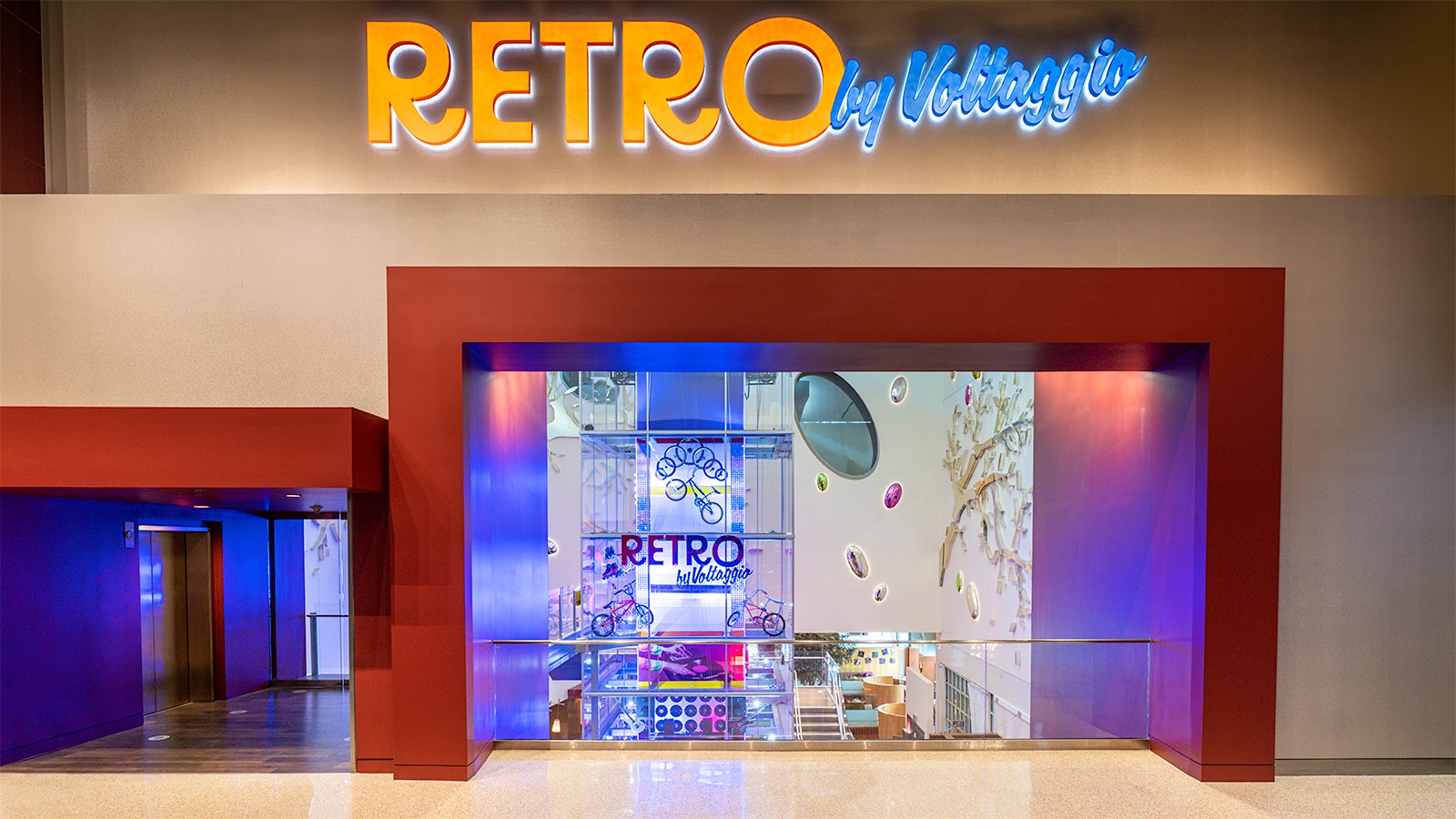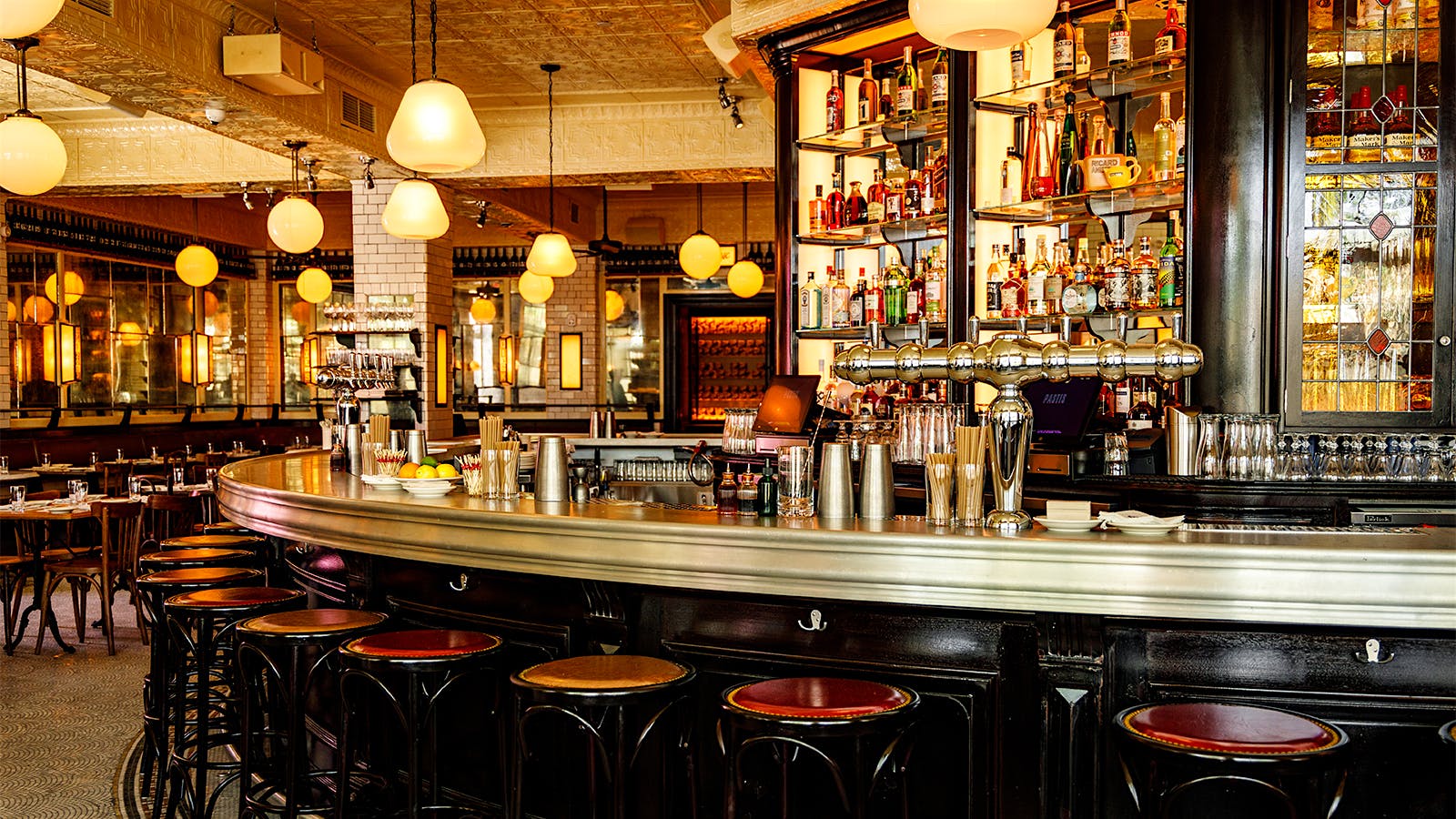Products You May Like
France has come to Florida—by way of New York—at the new Pastis, which opened in Miami’s Wynwood neighborhood on April 30. A sibling of Starr Restaurants’ Pastis in Manhattan (a Wine Spectator Award of Excellence winner), the bistro joins an impressive group of eateries from leading East Coast restaurateur Stephen Starr, including Restaurant Award winners such as Le Zoo in Bar Harbor, Fla., Le Diplomate in Washington, D.C., and Buddakan in New York. Keith McNally, who founded Pastis in 1999 and later partnered with Starr to reopen the Meatpacking District hotspot in a nearby location, remains involved.
Like its Manhattan sibling, Pastis Miami puts France front and center on its menu and wine list. In the kitchen, chef Neil O’Connell prepares dishes such as tuna carpaccio, onion soup, escargot, duck confit, chicken paillard and moules frites, along with a range of other seafood and pâté options.
Starr Restaurants corporate wine director Mikayla Cohen has assembled more than 300 labels for the exclusively French wine list, which opens with a wide selection of Champagnes and bubblies from acclaimed producers like Egly-Ouriet, leading into a robust collection of wines from Alsace, Bordeaux, Jura, the Loire Valley, Savoie and beyond. But Chablis and Burgundy lead the charge here, with bottles from celebrated domaines like Henri Gouges and Domaine de la Romanée-Conti. Guests can expect about 35 large- and small-format bottles as well, plus about 18 wines served by the glass.
“I wanted to make sure that the list was representative of the producers that I believe to be an iconic benchmark of [France],” Cohen explained, “as well as wines that found a way to meet the Miami palate, but in a way that might be a little bit off the beaten path.” For instance, the list features Malbec—a popular pick in Miami—but from the Loire Valley and southern France’s Cahors appellation.

Despite an emphasis on white wines, bubblies, rosés and chillable reds that are suited to Miami’s climate, the list also features older-vintage reds from estates like Bordeaux’s Château Angélus, along with rarer bottles from the likes of Ramonet. “[The list] is definitely one that will highlight some really difficult-to-acquire bottles, because we want to make our presence known here,” Cohen noted. “We would like to think that this is one of the biggest openings that Miami will see this year.”
For an alternative to wine, Pastis Miami’s beverage program features a selection of France-inspired cocktails like the green Chartreuse–based Eiffel Sour or the vodka- and brine-based Le Petit Pickle.
Starr had planned for years to open a restaurant in Wynwood, a lively, growing, artistic community with a great dining scene. Designed by McNally and Ian McPheely of Paisley Design, Pastis’ 179-seat dining room is dressed in traditional bistro elements, including white tiles, red banquettes, a zinc bar and a hand-painted mirror advertising the restaurant’s namesake aperitif. Outdoors is another dining space and garden where Cohen plans to host special wine events in the future.
Cohen emphasized that one of the key philosophies behind Pastis’ wine program is accessibility, with a wide spectrum of prices and styles on offer: “We want there to be a glass of wine in everybody’s hand, a bottle of wine on every table.”—C.D.
Voltaggio Brothers Open Retro by Voltaggio at Las Vegas’ Mandalay Bay

Earlier this year, chef Charlie Palmer announced that his Wine Spectator Grand Award–winning Aureole restaurant, at the MGM Resorts–owned Mandalay Bay in Las Vegas, was closing after 24 years, to be replaced by a temporary restaurant from Bryan and Michael Voltaggio with a 1980s and 1990s pop-culture theme. With that news, you may have wondered, have Aureole’s wine angels been replaced by skateboarding sommeliers?
Not quite. In fact, the space is in good hands, as over the course of their careers, both brothers spent time cooking at some of Palmer’s other restaurants, including Aureole in New York. “We feel a heavy responsibility to do something extremely special here,” said Bryan, noting that he and Michael spent a lot of time talking with Palmer, who has given them the utmost support.
Retro by Voltaggio began its one-year residency earlier this spring. Here, the Voltaggios—who own Best of Award of Excellence winner Voltaggio Brothers Steak House in Maryland—use contemporary cooking techniques to elevate dishes from the ’80s and ’90s, presenting them in a vibrant setting with curated art and music.
But what has happened to the space’s iconic wine tower? Still partially in use for wine storage, the multi-story glass structure is now an artistic showpiece filled with items emblematic of the ’80s and ’90s, including suspended bicycles, guitars, vinyl records and more. “The wine tower had always stopped people and suggested a certain experience,” said Bryan. “We had to position the tower to suggest a different experience.”
Artist Keith Magruder brought nostalgic pieces to the decor, including watercolor replicas of Nintendo video game consoles, VHS cassettes, a Speak & Spell toy and more. The tables are set with vibrant napkins and glassware, and one wall is adorned with album covers from the era, another with childhood photos of the Voltaggios.
Michael quickly pointed out that Retro may seem kitschy to some, but he believes it’s not gimmicky for the sake of being gimmicky: “It’s about going back to a time when things were less intimidating. Everything about Retro is guest-driven; we want to give people an experience.” While that experience is rooted in nostalgia, everything is intentional, yet with serious and innovative culinary chops at the core.
“We grew up eating a lot of these dishes, and when we started cooking in the later side of the ’90s, these were dishes we cooked at hotel restaurants in our hometown,” said Bryan. “For example, pot roast is something you could often find on the dinner table, and our mom presented it in a blue cornflower casserole dish.” In the Voltaggios’ interpretation, wagyu beef cheeks are cooked for 48 hours and accompanied by glazed Nantes carrots and fingerling potatoes confited in duck fat; the dish is finished with a tomato-beef demi-glace—and served from a blue cornflower casserole dish.

Among the other classics, the Caesar salad is lightened up with endives and a saffron Caesar dressing, plus a side of parmesan churro croutons. Another Voltaggio family favorite, chicken pot pie, takes the form of croquettes with buttery cracker crusts and black truffle coulis. The brothers’ take on lobster thermidor, a Las Vegas mainstay, features lobster roe pancakes alongside lobster served both in its shell and with the claws sitting in a lobster-based jus. “The idea is to scoop the gratin of lobster and bits of lobster into the pancakes and eat it like a little burrito,” said Michael.
Instead of trying to deliver a robust wine program around the ’80s and ’90s theme, which could be difficult with modern wines, the brothers leaned into cocktails. Bryan said, “Cocktails [back then] were sugar bombs and neon color. So, we kept the color but created fresher versions.” The bar program offers updated riffs on drinks like Appletinis, and the Blue Hawaiians are bright as ever but use fresh juice for more balance. And what would the ’80s and ’90s be without wine coolers? The Voltaggios’ version mixes Sauvignon Blanc with gin, yuzu, fresh melon, peach and strawberry juice. “It takes you back to the first time having one, illegally or not,” laughed Bryan.
The wine list includes about 60 labels, with 17 served by the glass. Michael described the list as less extravagant than that of their predecessor, with attention given to food-friendly offerings like Jean Marc Brocard Chablis and Montinore Pinot Noir.
Altogether, the Voltaggios feel that Retro will be a stepping-stone to building something with staying power in the future. “An opportunity in Vegas is something we always wanted,” said Michael. “Our goal is to [eventually] have a permanent footprint here.”—A.R.
Restaurant Marc Forgione Reopens with Legacy Menu Before Relocating

After briefly closing for kitchen renovations, Restaurant Marc Forgione has resumed service in New York City’s Tribeca neighborhood with a limited-time menu featuring some of its most-beloved dishes. The restaurant—the first in the growing collection from its namesake chef, Marc Forgione—will be moving to a larger location in Tribeca this summer, following a rent hike at its current building.
For chef Forgione, the legacy menu reflects on and celebrates his time at the 134 Reade Street location, which opened in 2008 and has received critical acclaim in the years since. The chef incorporates anecdotes throughout the menu, describing signature plates—such as an appetizer of hiramasa and a Szechuan button that has been served at the restaurant since day one—along with other dishes that hold significance for him, like shishito peppers, which he first tried while competing on the television series The Next Iron Chef in 2010. (Forgione won that season).
With a list of more than 350 selections and about 2,000 bottles in the cellar, the Best of Award of Excellence–winning wine program is not only still intact after the remodel, it is growing, according to wine director Dustin Wilson. (Wilson is also the co-founder of Apres Cru Hospitality, an investment firm working with Restaurant Marc Forgione and other Forgione outposts such as Award of Excellence winner Peasant and the newer One Fifth.) After the last service at 134 Reade, the bottles will be moved to the new location at 30 Hudson Street (former home of David Bouley’s Danube and then Brushstroke), which can house a considerably larger cellar.
Marc Forgione and Apres Cru Hospitality have no plans to continue using the 134 Reade space after the move. “Future plans for the current space are in the hands of the landlord,” Wilson told Wine Spectator. “But I think I speak for the whole team when I say I hope we see another fantastic restaurant take over the space and bring another great dining option to the neighborhood.”—J.L.
